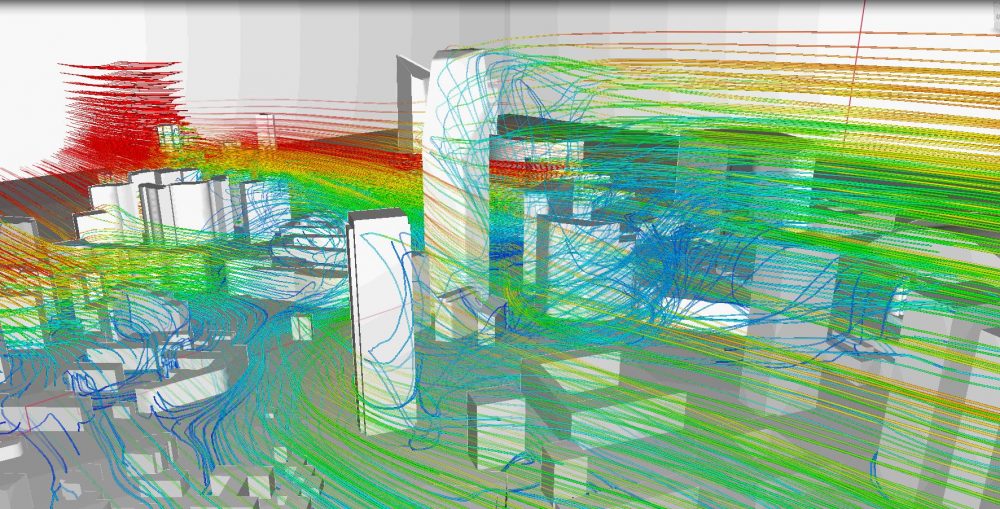Far back in ancient history and modern science, people have known about the power of sound to affect matter. Maybe you have heard that everything is vibrational energy and motion creates frequency and frequency creates sound. Therefore, If you place your hand on the body of an acoustic guitar while someone is playing music you will feel it vibrates. More interestingly, Whether we hear it or not, everything has a sound, a vibration all it’s own. So the question is If everything has a sound can we make music with every object in the world? Technically, yes but first of all, we need to look at the definition of “the music”.
Music
an art performing the specific frequencies (notes) in a harmony and tempo.
I know this definition will make most of the musicians angry but my aim is to explain the theory behind the music with an engineering perspective.
Motion creates frequency and frequency creates sound.
Let’s go back to our main concern which is the fundamental of the music, frequency. It is obvious that all the objects have a natural frequency if you vibrate them you will hear a sound. However, the mass of the objects plays an important role in their frequency, therefore, if you look at the musical instruments, they are mostly made of thin strings ( guitar, violin), hollows (drums, percussions) and thin metal or wooden materials (cymbals, horns, flute). Having string, thin or hollow body in instruments makes them easy to vibrate for higher frequencies. In history, some specific frequencies sounded good to people and they named these frequencies as notes.
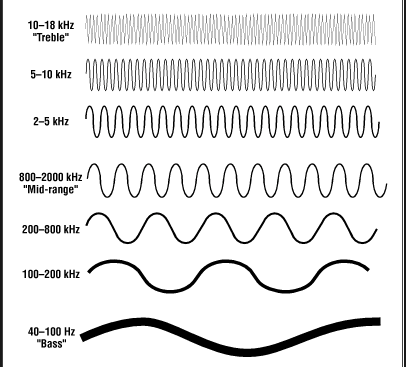
What are these specific frequencies in music? “Notes”
Of course in musical theories, there are a number musical systems called Western, Ottoman, Persian, Indian and Arabic. However, in this article we will explain the theory with Western type of music, because it is simpler.
As we all know that musical notes in western music are C-D-E-F-G-A-B (do-re-mi-fa-sol-la-si)
However, the most relevant are the Pythagorean and the 12-Tone Equal Tempered system (12-TET). The Pythagorean tuning could be obtained from
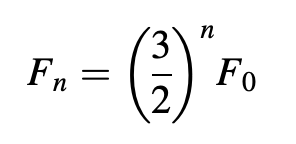
where F0 is the reference frequency and n are an integer number. In this equation, when the frequency obtained exceeds the octave, it must be multiplied by two.
The 12-TET system has seven natural notes (C-D-E-F-G-A-B), and five alterations obtained from a circle of fifths. The complete chromatic scale with twelve equal steps (semitones) could be expressed in Equation (2);

According to Equation (2), the frequencies generated for
eight octaves are shown in Table 1.
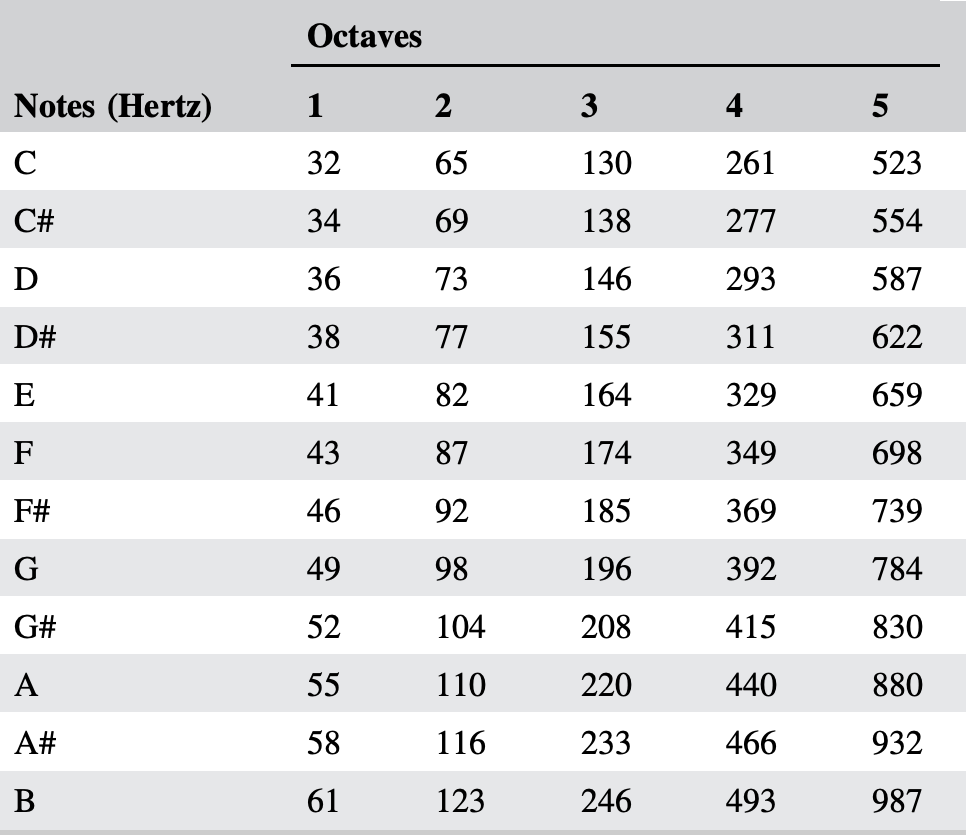
A note is the basic unit of music and relates to the pitch or frequency of a sound. Some musical instruments are monophonic and can only play one note at once, like a flute or a human voice, and others are polyphonic. Both the guitar and the piano, for instance, and can play multiple notes simultaneously and most of the instruments are often tuned based on 440 Hz frequency which is called A.
How does a guitar string work?
I would like you to imagine a guitar string and we will figure out why the string sounds different if you put your fingers to different frets. Let me explain this using my ten-year-old telecaster 🙂
General formulation of the frequency of a string can be written as in Equation 3

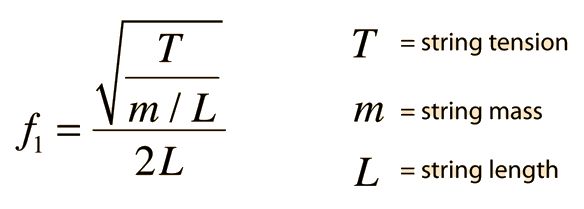
T is string tension which we already set while tuning the instrument. (for a 6-string-guitar is from up to down, E A D G B E)
m is string mass. The mass is the main characteristic that really plays a vital role in how we perceive music. For instance, even though two different instruments play an identical melody, the way we feel will be entirely different. In musical theory, this is called “Timbre”.
The most important thing is the string length (L). Because while playing the guitar all we do is to change the length of the string which generates different frequencies, in other words, notes. If you shortened the length of the string by pressing the frets, this will increase the frequency of the string and you will hear a thinner sound.
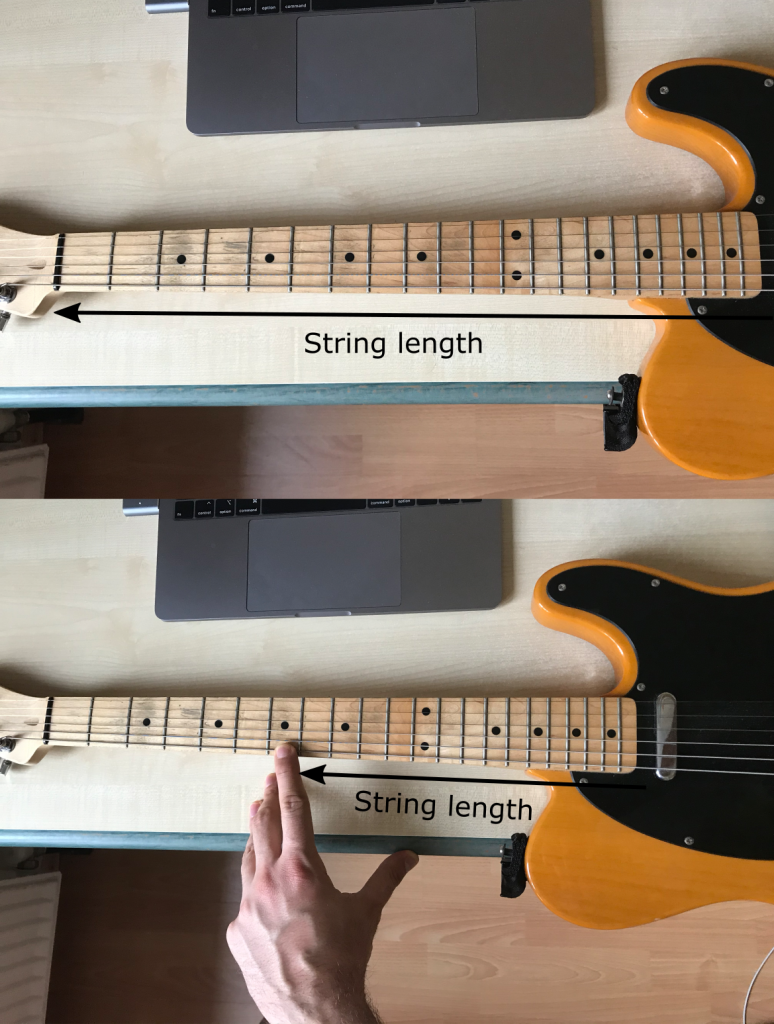
Here is a video recorded by a camera inserted into the hollow of a classical guitar showing clearly the strings’ oscillation.
To sum up, it is really interesting how everything is connected. Particularly, although you do not have a background in music or practice how to play an instrument, still we can find more in different disciplines by using our engineering knowledge. Please do not hesitate to submit your feedback, so that we can dig into the details of music theory from an engineering perspective.
References
1-http://hyperphysics.phy-astr.gsu.edu/hbase/Waves/string.html
2- ORTIZ-ECHEVERRI ET AL. “An approach to STFT and CWT learning through music hands-on labs” Wiley, doi: 10.1002/cae.21967, 2018



